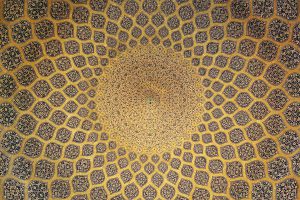Mufti Muhammad Taha Karaan (RA) on Abu Thawr

بسم الله الرحمن الرحيم
Question
Wa alaykum salam wa rahmatuLlah,
Pray that you are well. I will take your advice, jazakAllah khayran, and leave the matter. However, a few points I still consider insufficiently resolved:
Some biographical literature expresses that certain individuals may have adhered to a madhhab left behind by Abu Thawr. (For example, Muhammad b. Harun; Tarikh Baghdad, Entry #1467) I very much doubt that Abu Thawr would have transitioned from the Hanafi School into the Shafi School at a point in his scholarly career where he had already reached the level of absolute ijtihad. My basis is an understanding that mujtahids do not make taqlid of one another. Going out on a limb, I assume that details of his own ijtihad would be sporadic and not well documented, at least not to the extent of the likes of Imam Abu Hanifa or Imam Shafi. Moreover, it would be challenging to comprehensively assess whether his own documented ijtihad would have placed him outside of the madhhab. I say that because he was a transmitter of the qadim and I assume it likely that he formulated opinions exclusively reliant on Imam Shafi’s qadimi viewpoints. Hence, which of his opinions reflected Imam Shafi and which reflected his own ijtihad just seems indirect. With that, I feel it significant that Khatib reports that individuals adhered to a madhhab left by Abu Thawr. My question is, did he remain muntasib in the madhhab throughout his scholarly career, or rather eventually reach a higher level, and hence, develop his own school?
Furthermore, if he did not depart from the madhhab qadim, was he formulating opinions through utilizing usuli principles of the madhhab qadim? And from there, are there consequential differences between Imam Shafi’s usul principles when contrasted between what is found in the jadid and known from the qadim?
Mufti Taha’s Answer
Abu Thawr’s career after his abandonment of Iraqi fiqh and adoption of Imam Shafi’i’s fiqh would to a great degree resemble the path that the Four Muhammads would take one generation later. With the foundation provided by Imam Shafi’i’s works his own abilities would eventually develop into the type of ijtihad that would secure him the status of an independent mujtahid with a madhhab (initially) vibrant enough to attract followers. One of the more famous adherents of his madhhab was Junayd al-Baghdadi, the Sufi master. His madhhab, however, would ultimately not survive the test of time.
There are thus two sides to Abu Thawr: Abu Thawr the Shafi’i, and Abu Thawr the mujtahid. As a Shafi’i he read Imam Shafi’i’s works under the imam’s tutelage, works which he later transmitted. As an independent mujtahid he developed his own madhhab. Exactly what his madhhab was, what sort of usul and furu’ it comprised of, and to what degree it conforms to Imam Shafi’i’s own usul–all of these are questions whose answers will require greater research. (A good idea for future research.) Thus, I would say that you are correct where you assume that “details of his own ijtihad would be sporadic and not well documented.”
To your question about whether he remained muntasib despite having his own madhhab I would have to respond in the affirmative. The answer to the question requires clarity on what we mean when we say muntasib. This seminal issue resurfaces in your second question about Abu Yusuf and Muhammad.
To start unravelling the problem there are 4 separate factors that we need to identify: (1) ability (2) originality (3) comprehensiveness (4) self-perpetuation
(1) Ability
What I mean hereby is the academic competence to perform ijtihad. What creates this competence is knowledge of the sources, viz. Qur’an, Sunnah, ijma’ etc. and being possessed of a methodology to extract law from these sources. Every mujtahid has to have ability, be he mutlaq or muqayyad. No one who lacks can be a mujtahid.
(2) Originality
A mujtahid’s methodology is sometimes wholly his own, in that he developed it independently and did not inherit it from someone else. Sometimes it is inherited. Between these two stands the methodology which is partially developed by the mujtahid himself, and partially inherited from others.
Perhaps the only mujtahids whose methodology was 100% original were the fuqaha of the Sahabah. As for the Tabi’in and those after them, to some degree or the other their methodologies were influenced by or inherited from earlier mujtahids. Even the methodologies of the Four Imams were partially precedented. Informative in this regard would be Shah Waliyyullah’s remarks about how the fiqh of Abu Hanifah is basically nothing other than the fiqh of Ibrahim al-Nakha’i. Equally informative would be the link between the fiqh of the Seven Fuqaha and Imam Malik’s madhhab.
The factor of originality does not help much to draw a line of typological division between the mujtahid mustaqill and the mujtahid muntasib since a line dawn in terms of this factor would only succeed in setting the Sahabah to the one side and the rest to the other. The achievement of the Four Imams (or perhaps Three, with the exclusion of Imam Ahmad) lies not in the originality of their methodologies as in the comprehensiveness of those methodologies.
(3) Comprehensiveness
What I mean by comprehensiveness is a methodology that reaches consummateness in that it touches upon all the necessary areas. What the Four Imams inherited from earlier mujtahids was bits and pieces of methodology; but what they bequeathed to their own successors was a consummate system to which little needed to be added. So consummate were their systems that for a thousand years and more the best minds of the Ummah could only add secondary details, and the most autarchistically minded soloists could afterwards only aspire as high as to select their own set of methodological rules from a pre-existing broad body of rules. Zarkashi and others refer to this factor as istifragh masalik al-ijtihad, which might be translated as “exhausting the pathways of ijtihad”.
It is in this “exhaustion of the pathways” that we find that singular achievement of the founding imams of the madhahib that sets apart the mustaqill from the muntasib. A muntasib might be equal to the mustaqill in every other way, but he would always be placed second to him in that barely anything in his (the muntasib’s) system is new. In fact, most muntasibs learnt their methodology from a mustaqill, as is the case with Abu Yusuf and Muhammad in the Hanafi madhhab, and Abu Thawr and others in the Shafi’i madhhab.
(4) Self-Perpetuation
While madhhabs may be (and have been) founded by both mustaqill and muntasib mujtahids, only four madhahib would eventually prove resilient enough to withstand the passage of time. This was due, in my opinion, not only to popular acclaim or governmental patronage (as is sometimes superficially assumed) but more significantly to the ability of the jurists of these madhahib to perpetuate their legacies through inspiring generation after generation of students to preserve and develop the legacy. It is at this factor where we draw a line that sets the madhhab of a mujtahid mustaqill like al-Layth ibn Sa’d, or a mujtahid muntasib like Abu Thawr, to the one side, and the Four Madhahib to the other.
Back now to the original issue: What is a mujtahid muntasib? He is a mujtahid whose system or methodology of ijtihad was inherited wholly or almost in full, from earlier mujtahids. At some stage (during his student days, for example) he would simply be a muqallid, but as his abilities develop he rises from taqlid to ijtihad, and might eventually go on to found his own madhhab. When he does so, he would in all probability go on transmitting the works of the imam in whose madhhab he originally cut his teeth. This exactly is where Abu Thawr stands: he remains a transmitter of Imam Shafi’i’s qadim views, but he went on to develop an independent set of opinions, unearthing and studying which would make a good topic for an aspirant researcher.
In summary, I do not have all the answers. But perhaps I might be able to point out the direction where those answers are to be found, in sha Allah.


